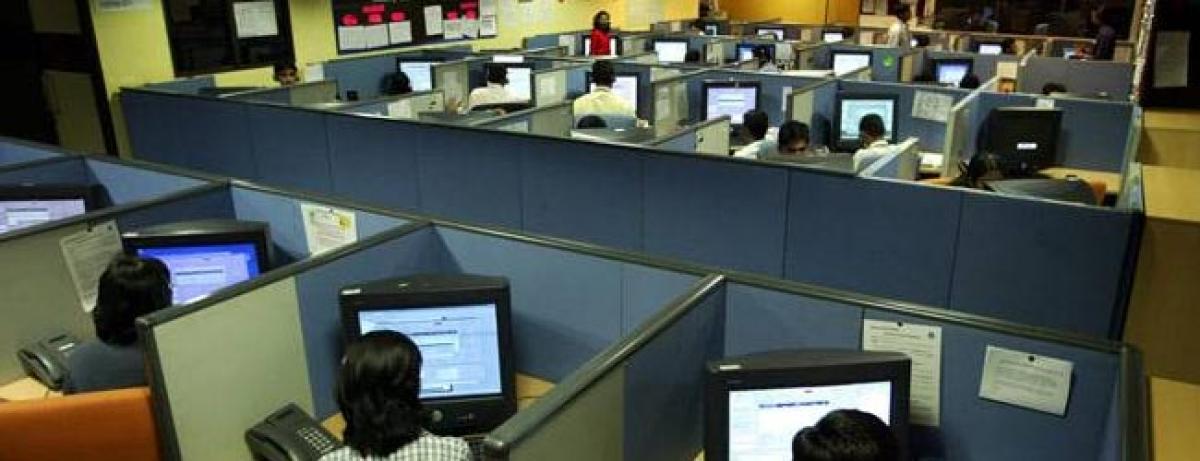Live
- Study explains mechanisms behind food poisoning, gut infections
- UN warns armed violence deepens humanitarian crisis in Sudan
- Maha Vikas Aghadi will win over 160 seats, form government in Maharashtra, says Shivakumar
- 6 Factors to Consider While Choosing the Right IVF Clinic in Hyderabad
- PM Modi emplanes for three-nation visit to Nigeria, Brazil, Guyana
- Chandrababu stresses on deregulation in telecom sector at Hindustan Times conference
- MP govt to promote 'Gita Jayanti' like other festivals
- Sidhant Gupta Revolutionises India’s Dairy Sector with Cutting-Edge Technology
- National Press Day 2024: Honouring Journalism in the Digital Era
- Margashirsha 2024: Dates, Rituals, and Spiritual Significance
Just In

India is set to lose 3.6 per cent of annual daylight work hours by 2025 due to rising temperatures, reveals an IndiaSpend analysis of data in a new United Nations report.
India is set to lose 3.6 per cent of annual daylight work hours by 2025 due to rising temperatures, reveals an IndiaSpend analysis of data in a new United Nations report.
The loss of daylight work hours could increase to 5.2 per cent in 2055 and eight percent in 2085, assuming a consistent rise of 2.7°C, according to Climate Change and Labour: Impacts of heat in the workplace, released by the United Nations Development Program (UNDP).
Exploring the link between rising temperatures and productivity loss, the report said South Asian countries will be the most affected by rising temperatures; European and South American countries will be the least affected. The report is the latest to warn of productivity losses resulting from climate change.
The worst-affected countries globally will be Burkina Faso, Cambodia, Pakistan and the Maldives.
In May, India recorded its highest-ever temperature of 51°C in the town of Phalodi in the western state of Rajasthan. In the southern state of Telangana, as many as 315 people died this year (until May) from heat-related causes, and as IndiaSpend reported in April 2016, heat-wave deaths in India increased 296 percent, or three times, over the last 23 years.
The year 2015 was the third-warmest recorded in India since record-keeping began in 1901 and as many as 22,563 people have died in heat waves across India between 1992 and 2015, as we reported.
Excessive heat while working, generally at temperatures above 35°C, creates occupational health risks and reduces work capacity and labour productivity. Maintaining a core body temperature close to 37°C is essential for health and human performance, and large amount of sweating as a result of high heat exposure while working creates dehydration risks.
Outdoor workers with a moderate and heavy workload exceeded the threshold limit value of 28°C and experienced 18-35 perceent productivity loss, according to a 2014 study from Chennai.
4 deg C temperature rise can lead to 13.6 per cent work-hour loss
The projected annual loss of daylight work hours in 2085 can further rise if temperatures do.
In India, an eight per cent loss in daylight work hours can be reduced to seven per cent if the temperature rise is limited to 2.4°C, but the work-hour loss will surge to 13.6 percent if the temperature rises by 4°C.
A large part of southern India and the eastern and western coasts, which have been unaffected by heat waves, are projected to be after 2070 and will be exposed to extreme heat-stress conditions, intensification of heat waves and heat-stress leading to increased mortality, IndiaSpend had earlier reported.
Those in the lowest-income group - heavy labour and low-skill agricultural and manufacturing jobs - are among the most susceptible to climate change, according to the UNDP report.
India has 263 million farm workers and 13 million workers in factories. Without changes to current global behaviour on climate change, India would see economic losses equivalent to 1.8 percent of annual GDP by 2050, widening to 8.7 percent by 2100, a 2014 report from the Asian Development Bank (ADB) predicted.
If mitigation and adaptation steps keep the temperature rise below 2°C, economic losses could be limited to below two per cent of GDP by 2100, the ADB report said.
Labour productivity impacts could reduce output in affected sectors by more than 20 per cent during the second half of the century, according to estimates in the Intergovernmental Panel on Climate Change (IPCC) fifth assessment report. The global economic cost of reduced productivity may be more than $2 trillion by 2030.
By Devanik Saha
(In arrangement with IndiaSpend.org, a data-driven, non-profit, public interest journalism platform. Devanik Saha is a New Delhi-based freelance journalist. The views expressed are those of IndiaSpend. The author can be contacted at [email protected])

© 2024 Hyderabad Media House Limited/The Hans India. All rights reserved. Powered by hocalwire.com







